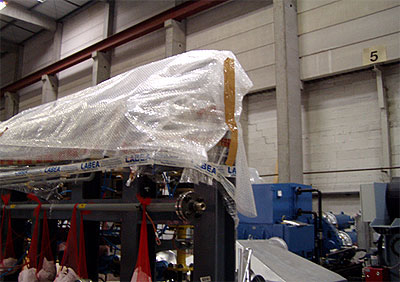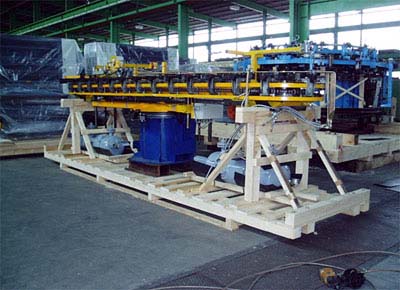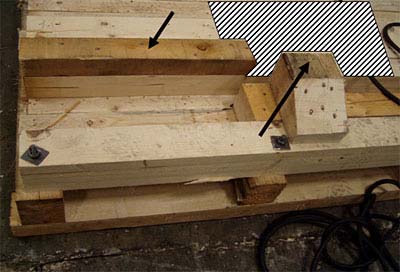It may be necessary for the packaged goods to undergo preparatory treatment depending on the nature of the goods and the stresses incurred as a result of transport, handling and storage. Such preparatory treatment can include:
- Partial dismantling of the goods
– to facilitate handling,
– to reduce the volume that must be packaged,
– to protect protruding parts or parts are liable to corrosion,
– to prevent the packaged goods from damaging the packaging.
- Padding of sensitive parts
Packaged goods are frequently transported that are particularly sensitive to mechanical loads. These must be protected against the effects of jolts, shocks, vibrations and pressure, and include products from the electronics industry and precision engineering.
A further function of the padding is to protect the surrounding film if the desiccant or VCI methods are used. To prevent the film from fraying, all parts of the packaged goods that have sharp edges or corners and which come into contact with the film cover must be covered with pads.

Figure 9: Padded corners and edges to protect the film cover
- Supporting parts of the packaged goods
If there is a risk that parts of the packaged goods may distort, bend or break under the influence of mechanical transport stresses, they must be supported or dismantled in consultation with the manufacturer.

Figure 10: Protruding components are supported by trestles.
- Securing of movable parts
Movable parts must be tied down, wedged or padded. This also applies to disassembled parts that are not packed separately.

Figure 11: Chocks
Figure 11 shows chocks which have been placed in position on the floor of a box on which the packaged goods will subsequently be placed. Padded film will be placed between the chocks and the packaged goods in order to avoid direct contact between the goods and the wood.
- Surface cleaning
It is necessary to do this before corrosion protection is applied. See section 4.3.
|



